7 Little-Known Strategies for Maintenance Service Monetization That Reduce Downtime
In today’s competitive landscape, machine builders are constantly looking for ways to boost revenue streams beyond the initial sale. Maintenance service monetization represents one of the most promising opportunities to increase profitability while simultaneously improving customer satisfaction. According to McKinsey & Company, for every percentage point that services grow over product sales, there’s a 50% increase in enterprise value—a staggering statistic that highlights why leading companies are investing in their service departments.
But here’s the twist—the most successful maintenance service strategies don’t just generate revenue; they also significantly reduce costly downtime for customers. It’s this win-win dynamic that makes these strategies so powerful. Let’s explore seven innovative approaches that might just transform your maintenance offering from a cost centre into a profit powerhouse.
Implementing usage-based maintenance contracts
Traditional maintenance contracts often leave both parties unsatisfied—customers feel they’re paying for services they don’t use, while providers struggle with unpredictable workloads. Usage-based maintenance turns this model on its head by aligning service frequency with actual machine utilisation.
By tracking operational hours, production cycles, or throughput, you can create maintenance schedules that perfectly match each machine’s real-world usage patterns. This approach ensures machines receiving heavy use get the attention they need, while lighter-duty equipment isn’t over-serviced. The beauty? Customers only pay for what they need, while you can optimise your service team’s schedule and resources.
This model works brilliantly with digital tools like Fter.io that can automatically track usage metrics and trigger maintenance workflows when predefined thresholds are reached. Plus, the transparent nature of usage-based contracts builds customer trust—they can clearly see the correlation between their operations and maintenance costs.
Creating tiered response time guarantees
Every minute of downtime costs your customers money—but not all customers have identical urgency needs. This presents an opportunity to offer tiered service levels with corresponding response time guarantees.
Consider a three-tier approach: Standard (response within 48 hours), Premium (same-day response), and Ultra (response within 2 hours, 24/7 support). Each tier commands a different price point, allowing customers to select the service level that matches their operational requirements and budget.
The brilliance of this strategy is its alignment with your customers’ actual pain points. For customers running critical production lines where downtime costs thousands per hour, that Ultra package suddenly looks like a bargain, not an expense. Meanwhile, customers with less time-sensitive operations can opt for more economical options. Your service team’s expertise remains the same—you’re simply packaging it to match different customer needs and willingness to pay.
Developing remote monitoring as a premium service
Remote monitoring technology has revolutionised the maintenance landscape, but many machine builders haven’t fully capitalised on its potential as a revenue stream. Rather than offering remote monitoring as a standard feature, consider packaging it as a premium service that delivers tangible value.
A robust remote monitoring service might include 24/7 equipment supervision, real-time alerts, regular performance reports, and priority scheduling for any issues detected. The key selling point? Problems can be identified and often resolved before they cause downtime, saving customers from costly production interruptions.
When implementing this service, focus on communicating the preventative value. Each time your team remotely detects and addresses an issue before it causes downtime, send customers a “downtime avoided” notification that estimates the production time and costs saved. These tangible reminders help justify the premium price tag and demonstrate ongoing return on investment.
How can predictive analytics transform your maintenance offering?
Predictive maintenance represents the next frontier in service monetization. By leveraging machine data, pattern recognition, and statistical analysis, you can forecast equipment failures before they happen with remarkable accuracy.
The monetization opportunities here are substantial. Consider offering predictive analytics as a subscription service where customers receive regular health assessments of their machines, complete with recommended maintenance actions and risk assessments. This approach shifts maintenance from reactive to proactive, dramatically reducing unexpected downtime.
What makes predictive analytics particularly valuable is its continuous improvement cycle. As your system collects more data, its predictions become increasingly accurate. This growing precision creates a virtuous circle where better predictions lead to less downtime, which in turn increases customer loyalty and willingness to continue investing in your predictive services. With a platform like Fter.io handling the data collection and analysis, implementing predictive maintenance becomes significantly more manageable.
Monetizing equipment performance optimization
Beyond simply keeping equipment running, there’s tremendous value in helping customers optimize their machines for peak performance. Performance optimization services focus on fine-tuning machines to achieve maximum output, quality, and efficiency.
This service might include regular performance audits, adjustment of machine parameters, operator training, and implementation of recommended upgrades. The value proposition is clear: better performance means more production with the same equipment, directly impacting customers’ bottom line.
To monetize this effectively, consider offering a performance guarantee where you commit to specific improvement metrics (like 10% increase in throughput or 15% reduction in waste). Structure your pricing to include a base fee plus performance-based bonuses tied to achieving these targets. This approach aligns your incentives perfectly with your customers’ goals, creating a partnership rather than just a service relationship.
Building parts management programs with guaranteed availability
Few things frustrate customers more than waiting for spare parts during a breakdown. This pain point creates an excellent opportunity for a parts management program that guarantees availability when it matters most.
A comprehensive program might include inventory management, automatic reordering of commonly used parts, consignment stock at customer locations for critical components, and priority access to rare parts. The selling point is peace of mind: when something breaks, the necessary parts are already on hand or can be expedited immediately.
This service is particularly valuable for equipment with long lead times for specialized components or machines operating in remote locations. By maintaining detailed records of every machine’s specific components through a system like Fter.io, you can predict parts requirements with remarkable accuracy and ensure availability exactly when needed. The premium customers pay for this guarantee is easily justified by even a single avoided extended downtime incident.
Leveraging expertise through training and consultation services
Your company possesses invaluable expertise about your machines that extends beyond maintenance—knowledge that can be monetized through training and consultation services. These offerings help customers maximize their investment while creating an additional revenue stream for you.
Consider developing a curriculum of operator training, maintenance technician certification, and production optimization workshops. These can be offered as standalone services or bundled with maintenance contracts. The value? Well-trained operators and technicians significantly reduce operational errors that lead to downtime, while getting more productivity from the equipment.
For more customized needs, consultation services can address specific challenges like production workflow optimization or integration with other systems. These high-value engagements not only generate premium revenue but also deepen your relationship with customers and often lead to additional equipment sales down the line.
Bringing these strategies together with a comprehensive aftermarket service platform like Fter.io enables machine builders to transform maintenance from a necessary expense into a strategic profit centre. By offering these value-added services that directly impact your customers’ productivity and profitability, you create mutually beneficial relationships that stand the test of time.
Remember, the most successful maintenance service monetization strategies are those that create genuine value for customers. When your services demonstrably reduce downtime and improve operations, pricing becomes a secondary consideration to the operational benefits delivered. That’s the true win-win of strategic service monetization.

